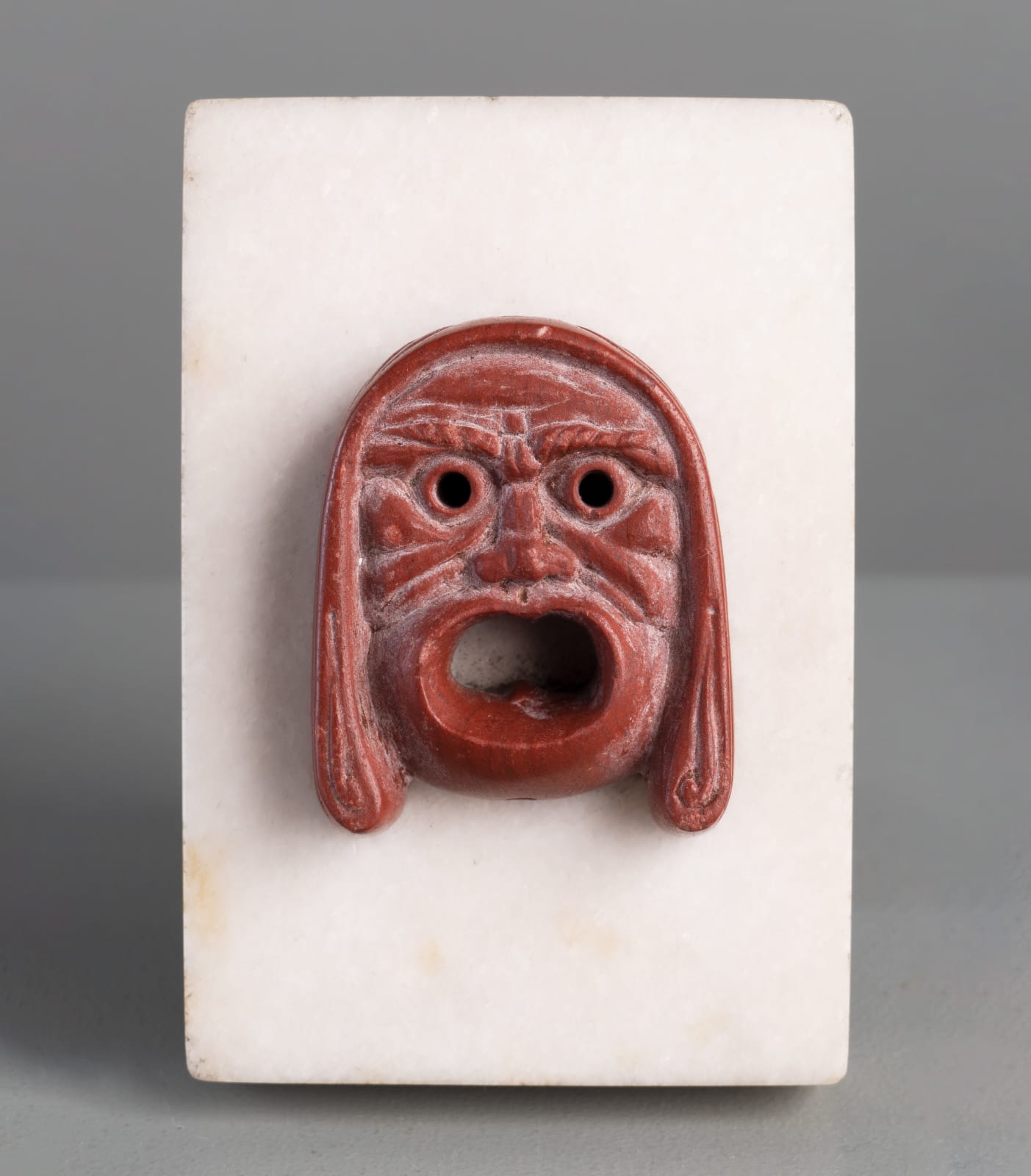ROSSO ANTICO THEATRICAL MASK, Roman Empire, 1st Century A.D.
5.5 x 4.2 cm the mask
2 1/4 x 1 3/4 in
2 1/4 x 1 3/4 in
Further images
The present piece is presented as property from Penicuik House, Midlothian, and was acquired by either Sir John Clerk, 2nd Baronet of Penicuik (1676-1755), or his son Sir James Clerk,...
The present piece is presented as property from Penicuik House, Midlothian, and was acquired by either Sir John Clerk, 2nd Baronet of Penicuik (1676-1755), or his son Sir James Clerk, 3rd Baronet of Penicuik (1709-1783).
Sir John Clerk, 2nd Baronet, a member of the Royal Society in the early 18th century and a Member of Parliament for Whithorn from 1702 to 1707, was renowned for his antiquarian pursuits and collection. As Baron of the Court of the Exchequer following the Act of Union of 1707, Clerk was entrusted with managing Scotland's financial affairs. He authored various papers, including "Account of the Stylus of the Ancients and their Different Sorts of Paper" (1731) and "On the Effects of Thunder on Trees and of a Large Deer's Horns Found in the Heart of an Oak" (1739), published in the Philosophical Transactions. Additionally, he wrote a tract titled "Dissertatio de Quibusdam Monumentis Romanis" in 1730.
Clerk, passionate about classical learning and Greek and Roman antiquities, amassed a collection that was highly regarded in his time. Clerk noted in his diary: “I had applied much to classical learning, and had more than ordinary inclination for Greek and Roman Antiquities.” Alexander Gordon, a contemporary of Clerk’s, noted “among all the collections of Roman antiquities in Scotland, that of Baron Clerk claims the preference, both as to number and curiosity.”
Sir John Clerk, 2nd Baronet, a member of the Royal Society in the early 18th century and a Member of Parliament for Whithorn from 1702 to 1707, was renowned for his antiquarian pursuits and collection. As Baron of the Court of the Exchequer following the Act of Union of 1707, Clerk was entrusted with managing Scotland's financial affairs. He authored various papers, including "Account of the Stylus of the Ancients and their Different Sorts of Paper" (1731) and "On the Effects of Thunder on Trees and of a Large Deer's Horns Found in the Heart of an Oak" (1739), published in the Philosophical Transactions. Additionally, he wrote a tract titled "Dissertatio de Quibusdam Monumentis Romanis" in 1730.
Clerk, passionate about classical learning and Greek and Roman antiquities, amassed a collection that was highly regarded in his time. Clerk noted in his diary: “I had applied much to classical learning, and had more than ordinary inclination for Greek and Roman Antiquities.” Alexander Gordon, a contemporary of Clerk’s, noted “among all the collections of Roman antiquities in Scotland, that of Baron Clerk claims the preference, both as to number and curiosity.”
Provenance
Penicuik House, Midlothian, acquired by either Sir John Clerk, 2nd Baronet of Penicuik (1676-1755) or his son Sir James Clerk, of Penicuik, 3rd Baronet of Penicuik (1709-1783)
thence by descent










